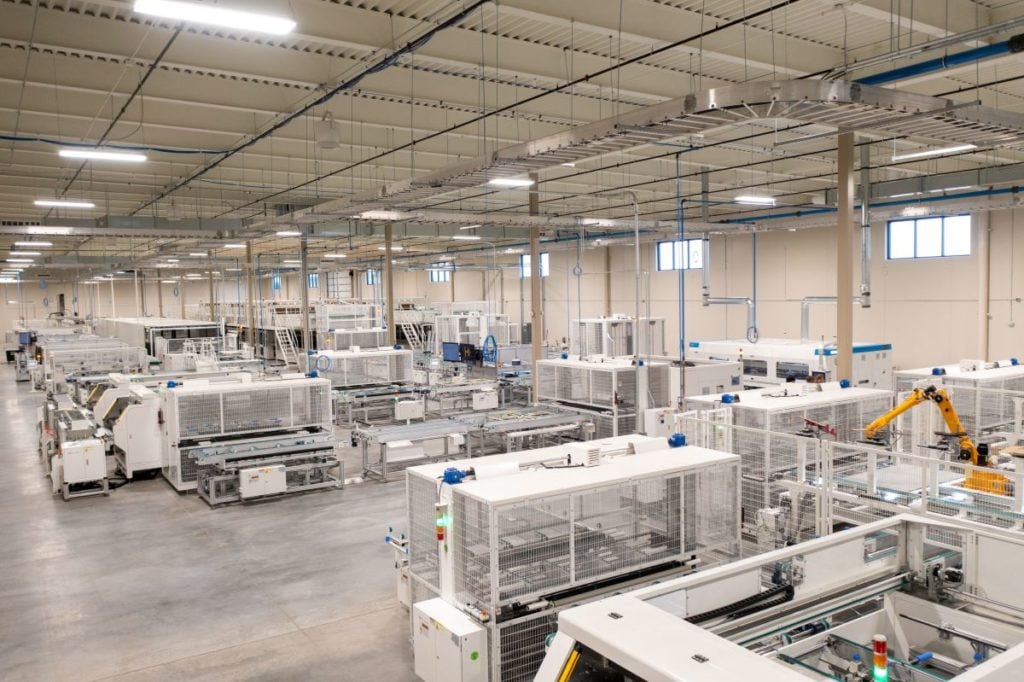
Clean energy manufacturing – led by solar PV expansions – accounted for 4% of global GDP growth in 2023, according to a new report from the International Energy Agency (IEA).
The Advancing Clean Technology Manufacturing report found that global investment in PV manufacturing more than doubled in 2023 compared with 2022, reaching US$80 billion. Most of this was in China, which also more than doubled its investment in PV manufacturing year-on-year. But, China’s global share of new investment did fall from 85% in 2022 to 75% in 2023.
Unlock unlimited access for 12 whole months of distinctive global analysis
Photovoltaics International is now included.
- Regular insight and analysis of the industry’s biggest developments
- In-depth interviews with the industry’s leading figures
- Unlimited digital access to the PV Tech Power journal catalogue
- Unlimited digital access to the Photovoltaics International journal catalogue
- Access to more than 1,000 technical papers
- Discounts on Solar Media’s portfolio of events, in-person and virtual
The report said that the actual production capacity for solar PV manufacturing was already sufficient to meet demand by 2030 under the IEA’s Net Zero Scenario model. A January report from Bloomberg New Energy Finance came to the same conclusion.
Capacity is still overwhelmingly concentrated in China and will continue to be so for the rest of the decade. However, the IEA identified the US and Europe as the second- and third-highest countries for new investment and also flagged up India and Southeast Asia, where new manufacturing projects have been planned.
The report said that if all of the planned projects come to fruition, the US and Europe will represent around 15% of global PV capacity by 2030. However, expansions in these countries will be matched and exceeded by those in China to the extent that the report predicts that “confirmed projects”—those expected to be operational by 2025—will reach 150% of global demand.
Perhaps of most concern for the viability of future projects is the oversupply of products affecting the majority of the PV supply chain.
The IEA said that current solar module and cell production facilities are seeing “relatively low average utilisation rates of around 50% globally.” It attributed this to a “module supply glut” and “rapid expansion of manufacturing capacity”.
The report said: “While the sharp increase in supply has driven down module prices, supporting wider consumer uptake, stockpiles of solar PV modules are growing and there are signs of downscaling and postponements of planned capacity expansions, particularly in China.”
Earlier this month, PV Tech head of research Finlay Colville said it is “hard to imagine” any significant module price increase in the near future – particularly in Europe, where trade defences are less stringent than those in the US.
For new projects, particularly those outside China, the IEA report emphasises the factors that can drive new investments beyond the cost of manufacturing. It highlights “the size of the domestic market, the availability of workers with the necessary skills, infrastructure readiness, permitting processes and other regulatory regimes” as key drivers for new manufacturing capacity. This perhaps speaks to the expansions in the US, where the domestic market is the second-largest in the world, and the Inflation Reduction Act (IRA) has introduced incentives for workers in the clean energy sector alongside direct incentives for manufacturing projects.
Since the IRA passed, over 25,000 new solar jobs have been created in the US, according to figures from non-profit group E2.
Research and development was also highlighted as a key driver for new manufacturing ventures.
“Innovation is another key focus for industrial strategy design; as the portfolio of energy technologies shifts towards mass-manufactured equipment, the energy sector is likely to include more R&D-intensive companies…Being at the frontier of innovation is an important opportunity to compete in the market, which is one reason why countries with relatively high labour and energy costs continue to manufacture goods in trade-exposed sectors.”
In a guest blog for this site, the CEO of German solar wafer producer Nexwafe said that Europe’s potential when it comes to R&D could keep it competitive in the global manufacturing landscape.







